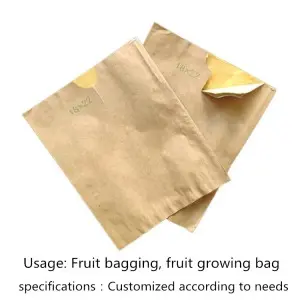Dec . 25, 2024 15:45 Back to list
protocol for cherry pollen germination exporter
Protocol for Cherry Pollen Germination A Comprehensive Guide
Cherry pollen germination is a crucial process in the cultivation of cherry trees, influencing the quality and yield of the fruit. Understanding the protocols involved in pollen germination can be beneficial for researchers, horticulturists, and agricultural exporters aiming to enhance their production techniques. This article outlines a comprehensive protocol for cherry pollen germination, highlighting essential steps, conditions, and considerations.
1. Collection of Cherry Pollen The first step in the protocol is the precise collection of cherry pollen. Pollen grains should be harvested during peak flowering, ideally in the early morning when dew has evaporated. Using a small brush, gently collect pollen from the anthers of fully mature flowers. It is crucial to minimize contamination during this process, so ensure that tools are clean and the collection container is free of any foreign substances. Once collected, transfer the pollen to a sterile, airtight vial to maintain viability.
2. Storage Conditions Cherry pollen is sensitive to environmental conditions; therefore, proper storage is necessary to preserve its viability. Pollen should be stored in a cool, dry place. Ideally, it should be placed in a refrigerator at around 4°C (39°F) for short-term storage, up to a few weeks. For long-term storage, freezing the pollen at -20°C (-4°F) is recommended. However, ensure that the pollen is thoroughly desiccated before freezing to prevent ice crystal formation, which can damage the pollen grains.
3. Preparation of Germination Medium A suitable growth medium is vital for successful pollen germination. A common medium comprises a solution of 10% sucrose, 0.01% boric acid, and 0.02% calcium nitrate. Mix these components together in distilled water, ensuring that they are fully dissolved. Sterilize the medium by autoclaving to eliminate any microorganisms that could interfere with the germination process. Once sterilized, allow the medium to cool and pour it into petri dishes or microcentrifuge tubes.
protocol for cherry pollen germination exporter

4. Inoculation of Pollen To initiate germination, gently scatter the collected cherry pollen over the prepared medium. Spacing the pollen grains appropriately is crucial to prevent overcrowding, which can result in competition for resources. Once inoculated, cover the dishes or tubes to maintain humidity but ensure they have adequate air exchange to prevent mold growth.
5. Incubation Conditions Place the inoculated dishes in a controlled environment. Ideal conditions for cherry pollen germination typically include a temperature range of 20°C to 25°C (68°F to 77°F) with high humidity (around 70-80%). A light cycle of 12 hours of light and 12 hours of darkness can also be beneficial, mimicking natural conditions. The pollen should begin to germinate within 2 to 24 hours, depending on the varietal characteristics.
6. Monitoring Germination Regularly observe the germination process under a microscope. Viable pollen grains will develop a pollen tube, indicating successful germination. Document the percentage of germination and the length of pollen tubes, as these metrics can provide valuable data regarding the viability of the pollen and its potential for fertilization.
7. Utilization and Application Once germination is confirmed, the pollen can be used for various applications, including artificial pollination techniques, breeding programs, and research studies. It is also essential to consider how this germination protocol might change depending on specific cherry varieties, environmental conditions, and other variables that could influence pollen viability.
Conclusion The protocol for cherry pollen germination outlined in this article serves as a foundational guide for those interested in optimizing cherry production. Understanding the intricacies of pollen collection, storage, germination medium preparation, and environmental conditions will not only assist in improving yield but also contribute to ongoing research and development in cherry cultivation practices. By adhering to this protocol, agricultural exporters and horticulturists can better ensure the health and productivity of cherry trees in their care.
-
Artificial Pollination Solutions for All Plant Pollen Types
NewsJul.29,2025
-
Premium Plant Pollen for Pure Pollination & Pollen Block Solutions
NewsJul.29,2025
-
Artificial Pollination Solutions for Efficient Crop Yields
NewsJul.28,2025
-
Premium Cherry Pollen for Pure Pollination & Different Types of Pollen
NewsJul.28,2025
-
Eco-friendly Fruit Paper Bags with Pollen Block Technology
NewsJul.26,2025
-
Premium Kiwi Pollen for Sale – Fresh Male Kiwi Pollen Supplier
NewsJul.25,2025